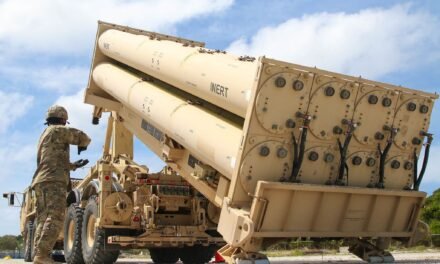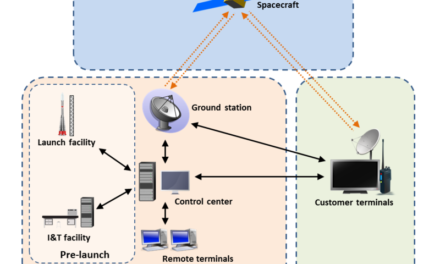Modern avionics systems are transforming civil aviation by improving safety, operational efficiency, and passenger experience. These advanced systems leverage cutting-edge technologies in navigation, communication, automation, and data integration to meet the growing demands of the aviation industry.
Key Improvements in Civil Aviation Operations
1. Enhanced Safety
- Flight Management Systems (FMS):
- Integrates navigation, guidance, and performance management, reducing pilot workload and minimizing human errors.
- Collision Avoidance Systems:
- Traffic Collision Avoidance System (TCAS) alerts pilots to potential mid-air collisions.
- Ground Proximity Warning System (GPWS) prevents controlled flight into terrain (CFIT).
- Weather Radar Systems:
- Provide real-time weather updates, enabling pilots to avoid hazardous conditions like turbulence, storms, or icing.
- Synthetic Vision Systems (SVS):
- Create a 3D visual of the terrain, enhancing situational awareness during low-visibility operations.
2. Improved Navigation and Precision
- Satellite-Based Navigation:
- GNSS (Global Navigation Satellite Systems), including GPS, supports precise navigation and approach procedures.
- Performance-Based Navigation (PBN):
- Allows aircraft to follow optimized routes, reducing fuel consumption and congestion.
- Automatic Dependent Surveillance-Broadcast (ADS-B):
- Provides real-time position data to air traffic control (ATC) and nearby aircraft, improving tracking and reducing separation requirements.
3. Automation and Reduced Pilot Workload
- Autopilot Systems:
- Manage flight controls during various phases, including cruise and approach.
- Auto-Land Systems:
- Enable safe landings in low-visibility conditions with minimal pilot input.
- Electronic Flight Bags (EFBs):
- Replace traditional paper charts with digital displays, streamlining flight planning and execution.
4. Operational Efficiency
- Integrated Avionics Suites:
- Combine multiple systems (navigation, communication, and monitoring) into a single interface for streamlined operation.
- Data Link Systems:
- Enable efficient communication between aircraft and ground stations, reducing delays and improving air traffic flow.
- Fuel Management Systems:
- Monitor and optimize fuel usage in real time, reducing costs and environmental impact.
5. Real-Time Communication and Connectivity
- Satellite Communication (SatCom):
- Supports voice and data transfer over long distances, enhancing communication with ATC and ground support.
- Controller-Pilot Data Link Communication (CPDLC):
- Reduces voice communication errors by allowing pilots and ATC to exchange text messages.
- Passenger Connectivity:
- In-flight Wi-Fi systems improve passenger experience and generate additional revenue for airlines.
6. Predictive Maintenance
- Aircraft Health Monitoring Systems (AHMS):
- Continuously monitor the performance of critical systems and components, identifying potential issues before they cause failures.
- IoT and AI Integration:
- Use real-time data and analytics to predict maintenance needs, minimizing downtime and ensuring fleet reliability.
7. Environmental Sustainability
- Efficient Flight Paths:
- Avionics systems optimize routing to reduce fuel burn and emissions.
- Noise Management:
- Advanced navigation and approach systems minimize noise pollution around airports.
- Integration with Sustainable Aviation Fuels (SAFs):
- Ensures seamless compatibility with evolving green technologies.
Technological Advancements Driving Modern Avionics
- Glass Cockpits:
- Replace traditional analog gauges with digital displays for enhanced readability and integration of flight data.
- Augmented Reality (AR):
- Overlay critical flight information onto pilot displays for improved situational awareness.
- Cybersecurity Features:
- Protect avionics systems from potential threats in increasingly connected environments.
- Artificial Intelligence (AI):
- Supports advanced decision-making, such as dynamic rerouting and weather avoidance.
- 5G Connectivity:
- Enhances data transmission for real-time operations and passenger services.
Benefits to Civil Aviation
- Safety: Reduces risks through advanced monitoring, automation, and predictive systems.
- Efficiency: Optimizes fuel usage, flight paths, and air traffic management.
- Reliability: Minimizes downtime with predictive maintenance and robust system integration.
- Passenger Experience: Improves connectivity, comfort, and overall satisfaction.
Conclusion
Modern avionics systems have revolutionized civil aviation, making it safer, more efficient, and environmentally sustainable. As technologies like AI, IoT, and augmented reality continue to advance, avionics will play an even greater role in shaping the future of air travel.
Hashtags
#ModernAvionics #AdvancedAvionicsSystems #AviationTechnology #SmartAvionics #NextGenAvionics #OperationalEfficiency #EfficientAviationSystems #OptimizedFlightOperations #OperationalExcellenceInAviation #AvionicsForEfficiency #AvionicsNavigation #PrecisionGuidanceSystems #AdvancedNavigationTech #FlightPathOptimization #AvionicsSafety #ReliableFlightSystems













